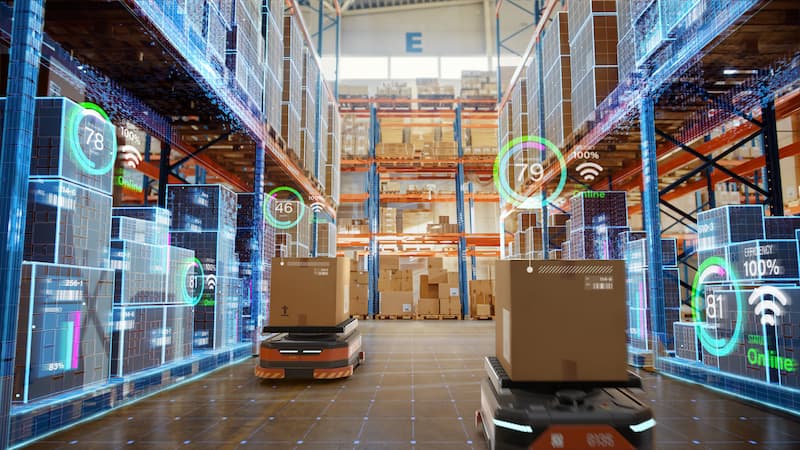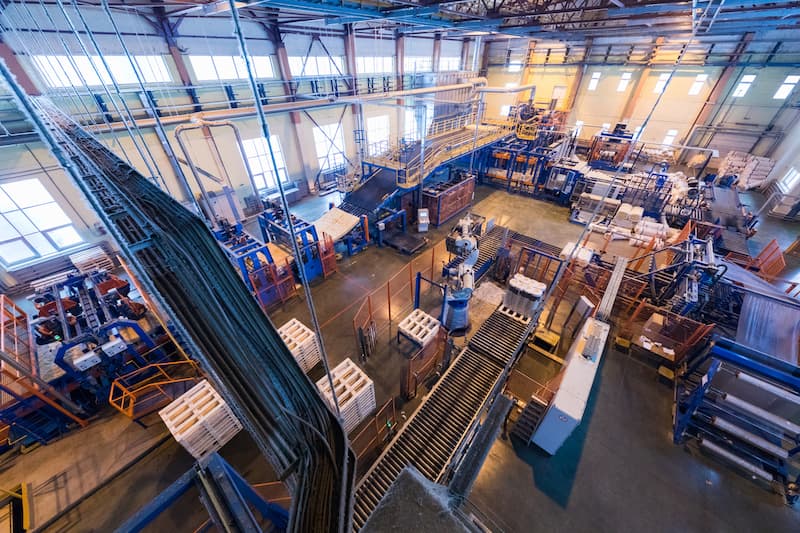Rising inflation is a concern for every business. The resulting combination of high prices and low economic growth creates financial stagnation and more challenges that need to be overcome to remain competitive.
Many companies are exploring innovative solutions to this problem and reducing costs, including automating their operations, but how does automation help and what challenges does the warehouse sector need to overcome?

Rising Inflation in the UK
With UK inflation rising to 9.4% in June 2022, the nation is experiencing the highest rates in 40 years. This creates severe pressure amongst business owners to compensate for increasing energy bills and other company costs. The Bank of England has warned that this increase could reach as high as 11% before the end of the year. Separate from the usual rise in wages that comes from inflations, the steep increases significantly impact supply chains globally and domestically, meaning managers of warehouses, fulfilment and distribution centres will feel the effect of these increases more than most.
Increasing Costs
The logistics sector is a vital partner of the warehouse industry, and both have been presented with new challenges due to increases. Reduced consumer demand, lack of drivers and erratic supply chains all create immense disruptions. These interruptions will be costly to compensate for while every business along the supply chain attempts to fulfil their orders within their intended lead times.
Warehouse storage space is becoming a concern as the rental costs of using these spaces increase along with inflation. This issue creates a demand to make the most of your available space to make your storage cost-effective and eliminate the need to rent additional space at increased costs.
What is Warehouse Automation?

Automation can be applied to warehouses to improve productivity and efficiency and cut costs. The concept of automation within a warehouse is to be able to move the stocked inventory with minimal human interactions. The ability to have incomings and outgoing be conducted without intervention significantly reduces labour-intensive duties for your workforce and practically eliminates the repetitive physical tasks inherent to warehouse operations.
Here’s an example of how automation works within a warehouse environment:
A worker can load up a mobile, autonomous robot with a selection of sealed boxes ready for shipping. Wireless software can monitor and record the moving inventory as the machine transports its delivery to the destination in the warehouse’s shipping zone. This automated task now frees the human worker to carry out other tasks, such as more complex operations that cannot be automated.
Automation can be conducted at various levels, with robotic machines and conveyors as physical examples. Digitally automated data and stock control software can create significant improvements through.
Digital and Physical Automation

Digital and physical automation work in pairs to create a fully automated warehouse, but starting with a digital system is a more cost-effective solution with more immediate gains. Digital automation involves a warehouse-wide data management system with wireless software; much like physical automation, this system will eliminate a lot of manual work regarding inventory data management.
Mobile barcoding is an example of digitally automated warehousing. Other elements involved with digital automation include implementing RFID labels, mobile barcode scanners and delivery portals to provide a complete image of your warehouse’s activities and monitor them all in real-time with no human error. As shown here, automation provides warehouse managers with many gains beyond reducing costs. Choosing the right automation system for your business can gauge your investment to suit your current capabilities. For example, you may wish to enjoy the benefits of digital automation before growing into physical automation.
Benefits of Automation

The investment required to automate your warehouse may seem questionable initially, but the returns will be substantial in the short term and for your long-term operations. In addition, as well as reducing costs, automation has a positive effect on your entire business in many ways other ways
Efficiency and customer satisfaction are increased thanks to automation. Human error is always possible in a working environment, and mistakes increase when your workforce is busy. Fulfilment centres must manage the growing demand for eCommerce products with complete accuracy, which isn’t always possible. More companies are investing in developing an automated warehouse (or smart warehouse) system to ensure that each order is completed with 100% accuracy daily.
Efficient distribution of labour comes with automated warehouses. Whether it’s data inputting or inventory movements, simple tasks like these can be automated to free up your valuable workers to contribute to more complex tasks. This attitude of upskilling lets managers increase their facilities’ efficiency and enables employees to be fulfilled as they use their talents to the fullest extent.
Safety is also improved thanks to the implementation of physical automated processes. Many elements of daily warehouse operations involve high risk. For example, employees can work around machinery such as forklifts or at considerable height to retrieve inventory. Once a company has enjoyed the success of their digital automation, many will invest in physical automation to eliminate these workplace risks.
At GSM Barcoding, we believe one of the most effective ways warehouse managers can compensate for rising inflation is by embracing automation for their inventory management and other daily operations. You can learn about the successful solutions for digitally optimising warehouse operations here.


















